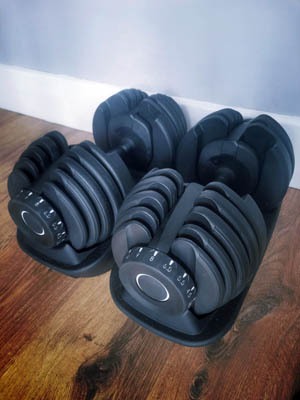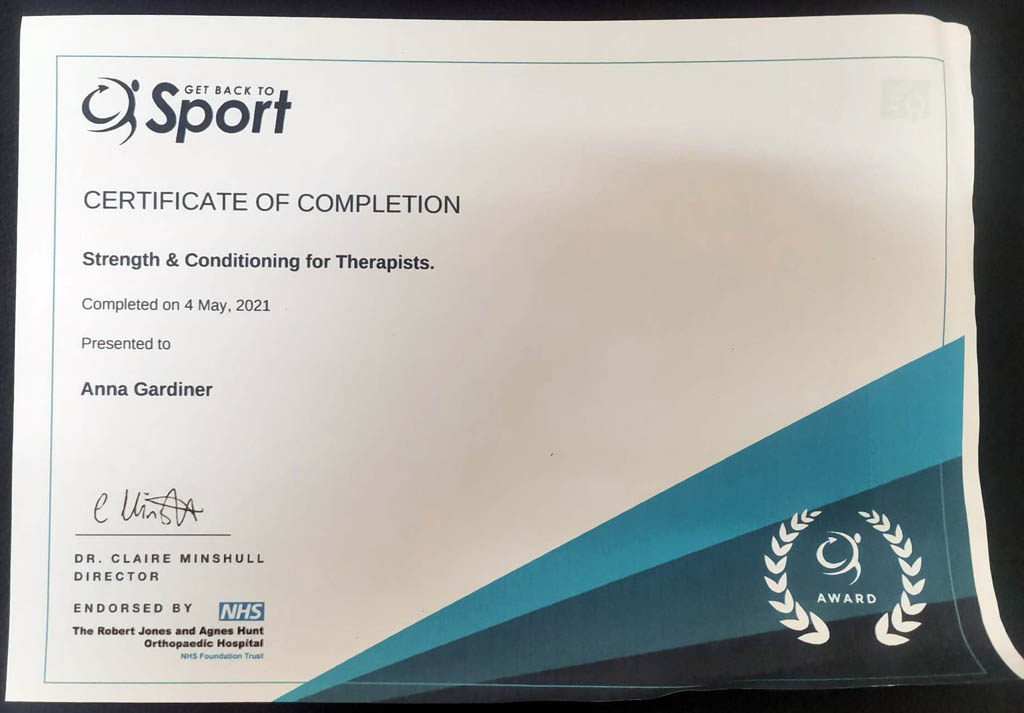Over lockdown I had time to do Continuing Professional Development that I’ve had my eye on for awhile. Strength and Conditioning for Therapists is a course created and delivered by Dr Claire Minshull, a well known and highly respected physiotherapist specialising in rehabilitation and conditioning. The course is specifically for therapists interested in the latest findings for strength gain and provides information and guidance on delivering meaningful and evidenced rehabilitation. It debunks the generic 8 to 15 reps that have become the norm for many of us practitioners, guidance passed down like Chinese Whispers.
Essentially if you want to gain strength specifically – not muscle endurance or power- the only evidence for gaining that is 3 to 5 repetitions of your 1 repetition maximum. So what does this mean in simple terms? Well, using weights or loads that you can lift comfortably, gradually increase until you reach a weight that you can only do once – your 1 repetition maximum. Then work out about 80% of that maximum and do 3 – 5 repetitions of it. After a 90 second or 2 minute rest, repeat for a total of 3 sets.
People often feel that this type of strength work is suitable more for weightlifters and bodybuilders in the gym but this simply isn’t the case. It is exactly the type of rehabilitation needed for those with osteoarthritis, post joint operations, osteopenia and osteoporosis, recovering from torn muscles as well as anyone wanting to prevent the inevitable decline of muscle and bone strength (an estimated 3% to 8% per decade from your 30s). Strength training can also help with weight loss, pain management, improved ability to do normal tasks and less risk of injuries and niggles in sports and everyday life.
The gym is certainly a good place to start and enlisting the help of a personal trainer – preferably one trained in strength for rehabilitation – for an initial session is ideal to help establish good form and practices. Some, like Simon Bennett of SimonSaysFitness in North Wiltshire, are particularly good at building confidence and establishing what works best for you. Although gyms have all the equipment and a safe environment, some people find them intimidating places, or simply don’t have the finances or time to invest in a membership. But you can do strength training at home, either with proper equipment (check out these space saving dumbbells), and resistance bands or, as a cost effective option, things around the house. A 2 litre bottle of water is pretty heavy if you have suffered from a shoulder/arm problem and have lost some strength.

If you think you may benefit from strength training and are not sure where to start, let me know, and we can work out what’s best for you together. Certainly when I am giving my clients rehabilitation it will be a lot more focused, person specific, evidence based and measurable. Look forward to helping you on your strength training journey 🙂







